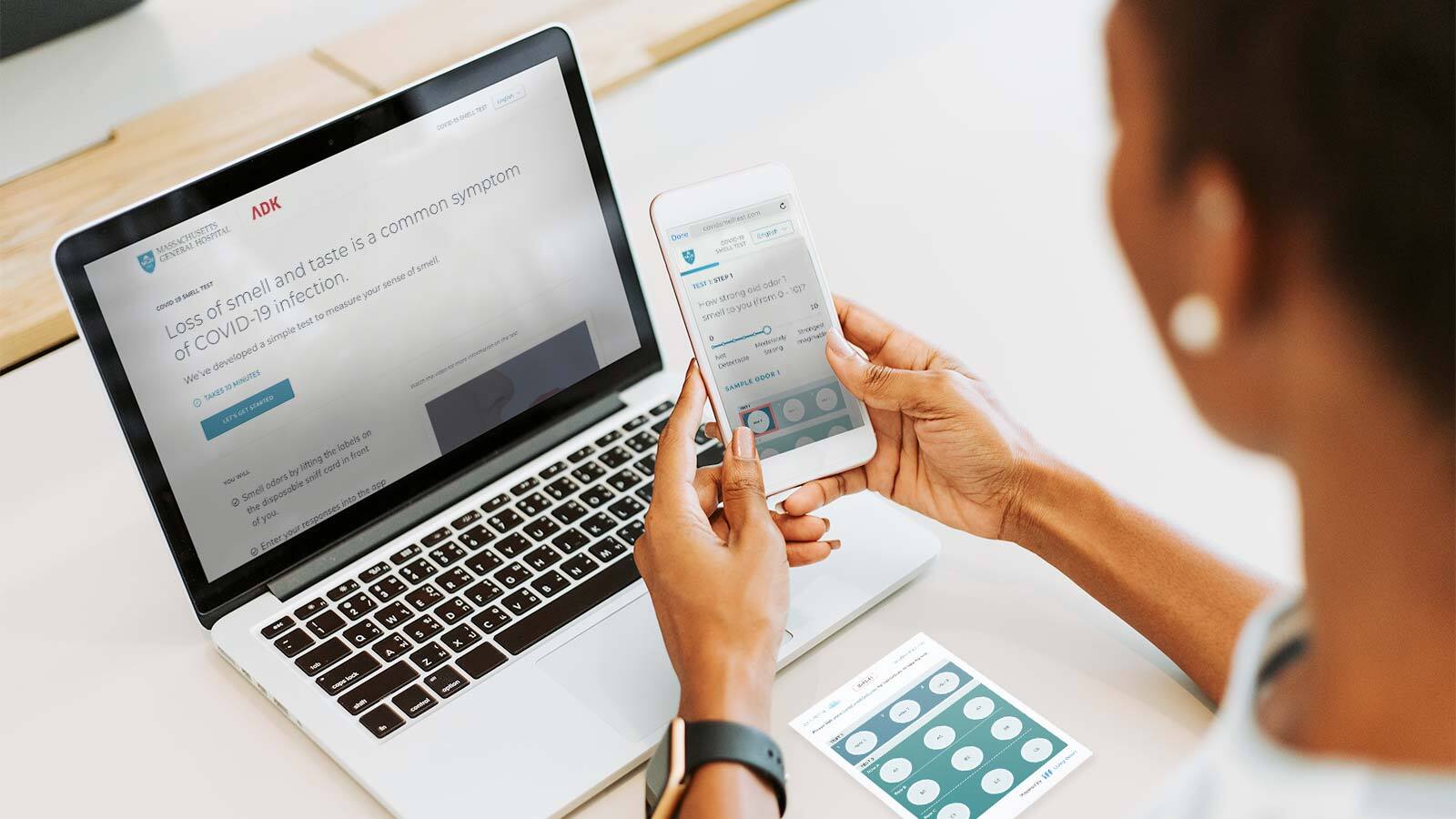Before I get into the story of the product, science, and technology, it is important to hit upon the velocity of the development & caliber of the team. A huge credit to everyone who has a fingerprint on this product, including everyone mentioned in this blog post, as well as those other partners and friends of the effort. The spread of COVID-19 was rapid, and it takes a heck of a team to match the pace of a pandemic.
Designing and building an app normally takes a few months. Apps used for health care typically take even longer.
But in just a fraction of the time it normally takes, we were able to design, build, and launch a screening and diagnostic tool for COVID-19. Early findings from the first trial have shown a lot of promise for this product, but recent data is even more exciting for its potential to help bring America back on her feet.
Here’s how we did it.
Dr. Mark Albers is a neurologist from Massachusetts General Hospital with a lab that is testing olfactory decline as a potential biomarker for Alzheimer’s disease. We have an ongoing collaboration with Dr. Albers, working on the software and hardware that powers his research.
But when he called in early April, he wanted to discuss COVID-19, not Alzheimer’s. He told me about a recently published study that described a pattern of self-reported smell loss in COVID-19 patients. This study would form the basis of what could soon be an accurate, low-cost COVID-19 test.
We began work alongside Dr. Albers and a clinical team of 20+ medical professionals and researchers. This team eventually morphed into a much larger research effort to study the role of smell loss in COVID-19 patients.
As a team, we defined the goal of creating an app-driven COVID-19 smell test that could be taken at home and for less money than alternative tests racing to market. To accomplish this we would leverage printed smell test cards, an app, and machine learning. The cards would contain a series of odors that would be the basis of the test. The app would handle testing and data collection on desktop and mobile. Finally, we’d leverage machine learning to identify the patterns that would help detect COVID-19 in patients.
The timeline? We would need to design, build and test the application within two weeks to support a clinical trial.
We ran both design and development sprints simultaneously. Close collaboration between the teams drove pace. Two weeks later, we launched:
- a web-based testing app for patients,
- a cloud-based, HIPAA-compliant database built with AWS,
- and a dashboard where the clinical team could see test results.
The application was also built to support translations, allowing us to launch a Spanish version of the application shortly after the English launch.
Finally, we were able to start collecting the data that would help build our COVID-19 detection algorithms. We used a combination of symptom tracking and three measurements of odor tests for trials first in Boston and then in Argentina. A massive credit to everyone on the project.
At this time, we are sitting on some very exciting data. While I’d love to share it with you, it is best that it comes via more formal sources over the next few weeks. If you’d like to be the first to know, shoot an email to info@adkgroup.com.
What I can share is that our findings show that loss of smell is a very powerful indicator of COVID-19. Also, our method of combining a “smell card” and a web app is an effective way to deliver a very easy-to-use at home test to measure it. Our test has the potential to become a low cost, easy-to-use COVID-19 diagnostic with sound accuracy.
For now, though, the journey continues.
Our team remains remote and our smell test continues to evolve and find new opportunities.
While we can’t control the virus, we can all find ways to use our skills to help a society in need. We took our shot on something as crazy as using smell as a tool for viral detection, and our data turned out to be promising. And we’re excited for the possibilities.
While the times were and are difficult, it remains equally uplifting to work alongside a team dedicated to putting their technical skills towards meaningful efforts behind purposes like stopping COVID-19.
In the meantime, feel free to reach out to me with any thoughts and/or comments. We continue to hear awesome ways companies are growing their business digitally through the pandemic and we’d love to hear your ideas.
The time may be unprecedented, but so is the opportunity.
Wear a mask and be resilient. We’ll get through this together.
